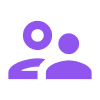Due to the tight labor market, employees’ workload has increased significantly over the past year, resulting in record high absenteeism. Nationale Nederlanden’s Sick Leave & Disability Trend Report (November 2022) states that half of employers report that employees are absent for long periods of time because of mental complaints related to their work. How to contain this burnout wave?
Workload
The (too) tight staffing levels create additional workload for the remaining employees. Can a restaurant close its titty for another day, in education and child care sending children home is already difficult. For a care facility, a day of no care for residents is certainly not an option. Reduced freedom and poorer schedules are a breeding ground for mental complaints that can cause employees to be home on average twice as long as employees who were absent for other reasons.
With overwork and burnout, employees experience more stress than they can handle. An important difference is that the symptoms caused by stress in overexertion often develop over a short period of time. Usually these symptoms go away quickly when the stress subsides. Overwork can turn into burnout, being burned out, if symptoms persist for too long. In burnout, symptoms result from experiencing too much stress for a long time. As a result, these symptoms also tend to last longer.
In the Job Demands-Resources model, the characteristics of each job are categorized into:
- Job demands: what does the work require of you?
- the work-related resources (job resources): what energizes you in your work, what motivates you?
The model is based on the assumption that excessive task demands (job demands) lead to stress and overtiredness and that having resources (job resources) contributes to higher motivation and productivity. The challenge is to get and keep these in balance.
Go taskcrafting!
In taskcrafting, the employee answers the question: which of the listed activities and tasks give me energy and which do not? The approach is: to tinker out of the job the tasks that are difficult for the employee and that he does not enjoy, and to put the employee more in his or her power with tapping the energy sources even more.
Sample questions
The following questions can be used when taking stock of activities that consume (a lot of) energy:
- Which tasks take a lot of energy? How could you perform this task through a different, more simple method so that it requires less energy?
- What tasks could you tackle more efficiently? For example, by using a different method of working or allocating time differently?
- What are the options for delegating or swapping high-energy tasks with a colleague?
The answers to the questions below give an idea of the work that is energizing:
- What parts in your work would you like to do much more of because they are a source of energy?
- What work have you done when you go home whistling?
- What tasks are you looking forward to doing again?
Vitamin A talks
Overwork is the precursor to burnout. Prevent long-term downtime with taskcrafting; it can give employees more air and relaxation in their work. But fair is fair, due to record shortages in the job market, taskcrafting is by no means the cure for burnout in all cases. But Vitamin A conversation ( A =Attention) in which the supervisor has an eye and ear for the difficult situation and is willing to think and -do‖ with you to alleviate it, of course, always helps.
Want to know more?
Want to know the cost of your current employee turnover and how to reduce it? Also read our blog “Preventing employee turnover: 10 tips and calculate yourself!”.




























